Erfurt
Really love the contrast with a nearly empty Domplatz on Kurt Hielscher's photo opposing mine with the terrace and the movement of two cyclists here on this impressive square in Erfurt, the capital and with over 200 thousand inhabitants largest city of Thüringen. This is the only photo of Erfurt published by Kurt Hielscher.
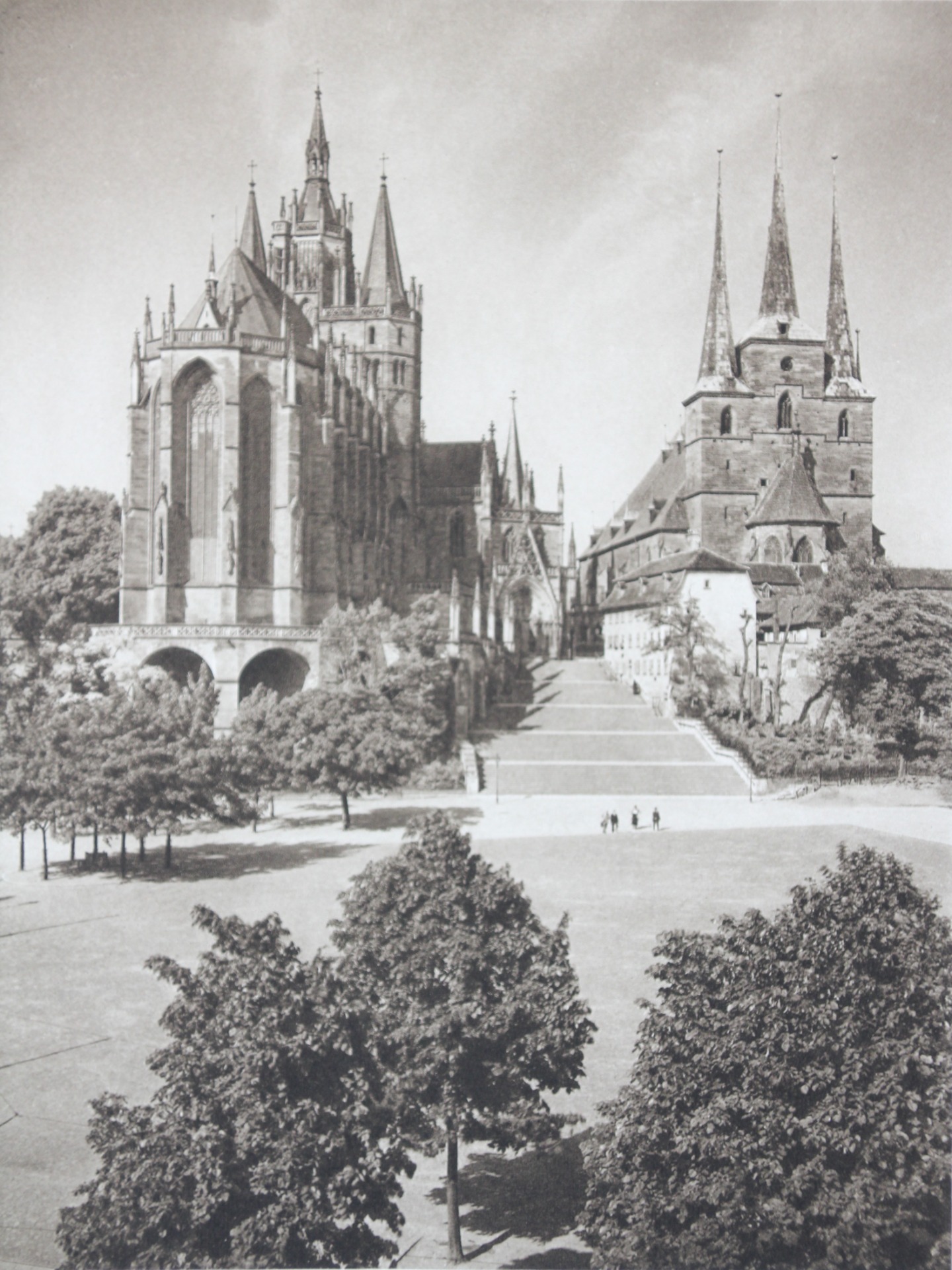
Dom & Severikirche, 1924. Photo: Kurt Hielscher.
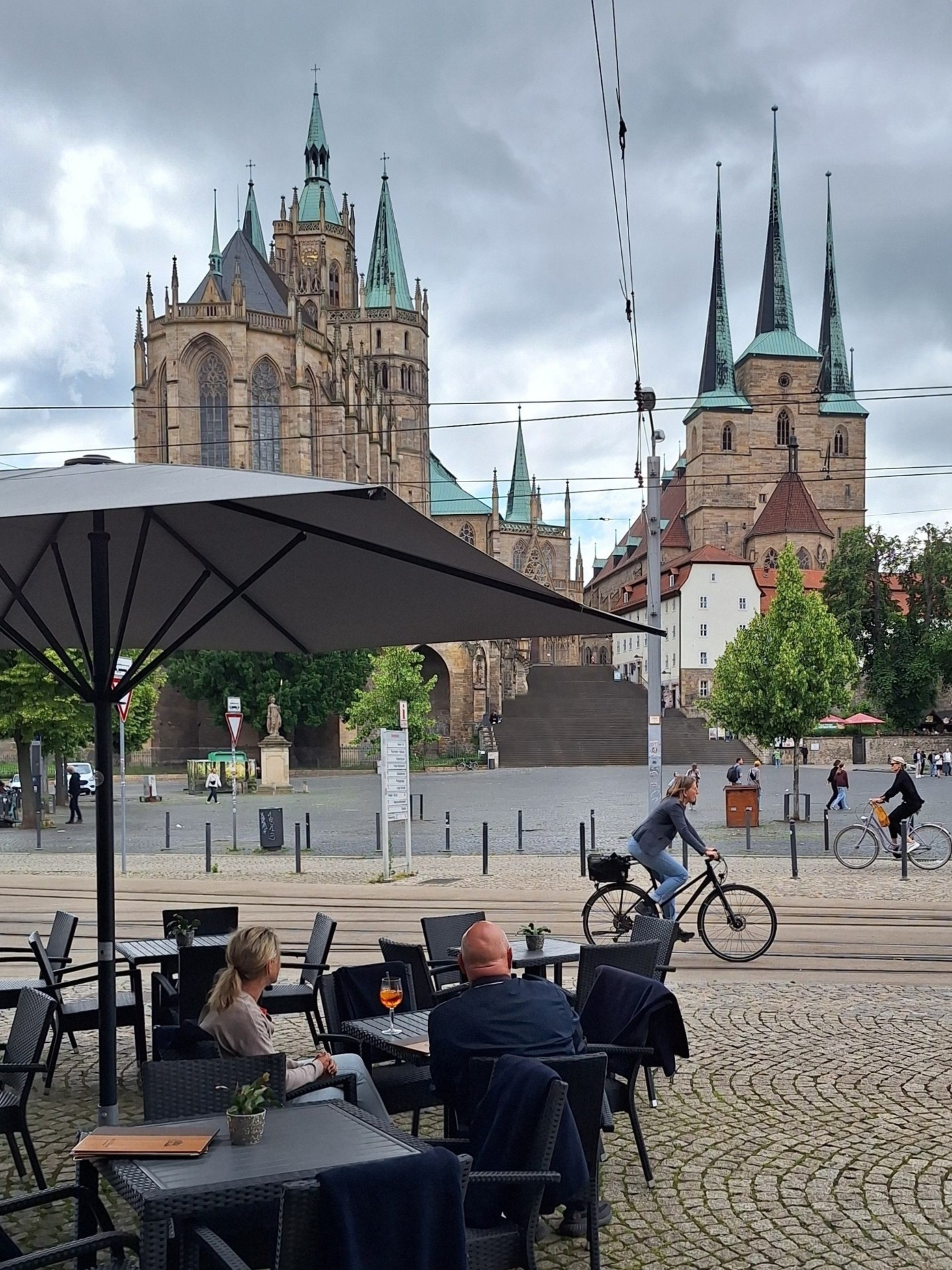
Dom & Severikirche, 6st of June 2025. Photo: Casper Molenaar.
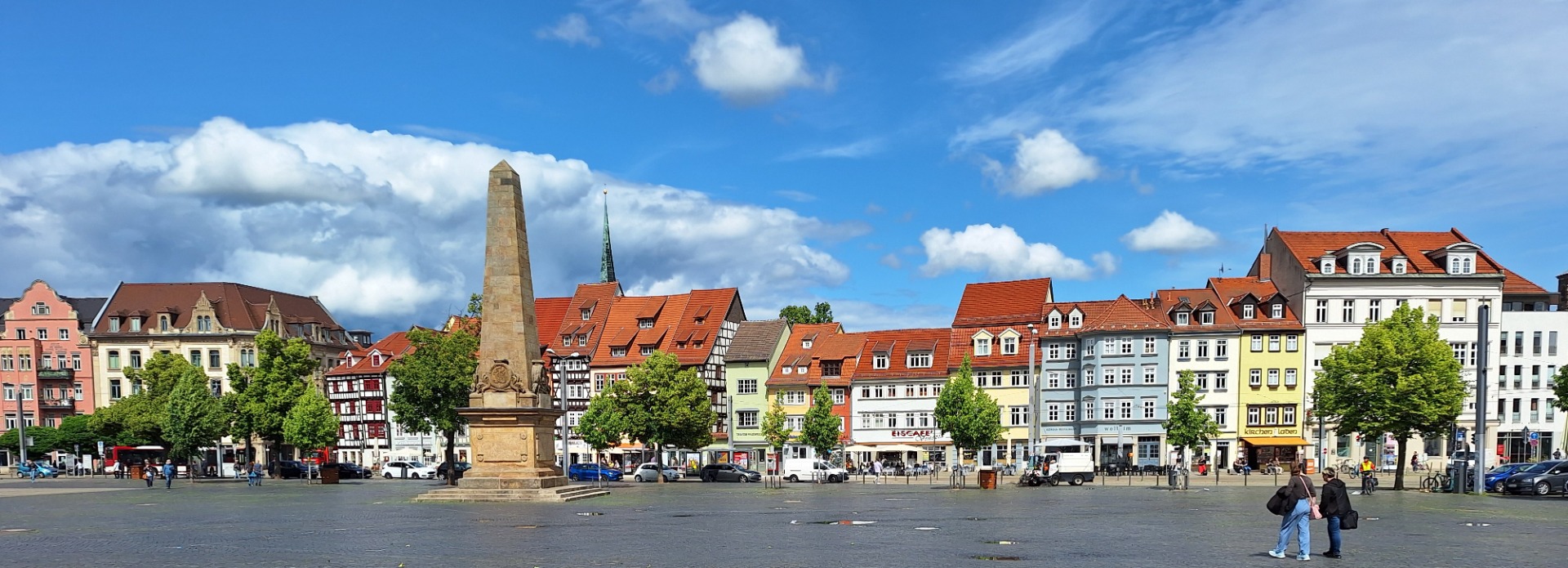
Inside the Dom. The building of the Dom lasted from the 12th till the 15th century.
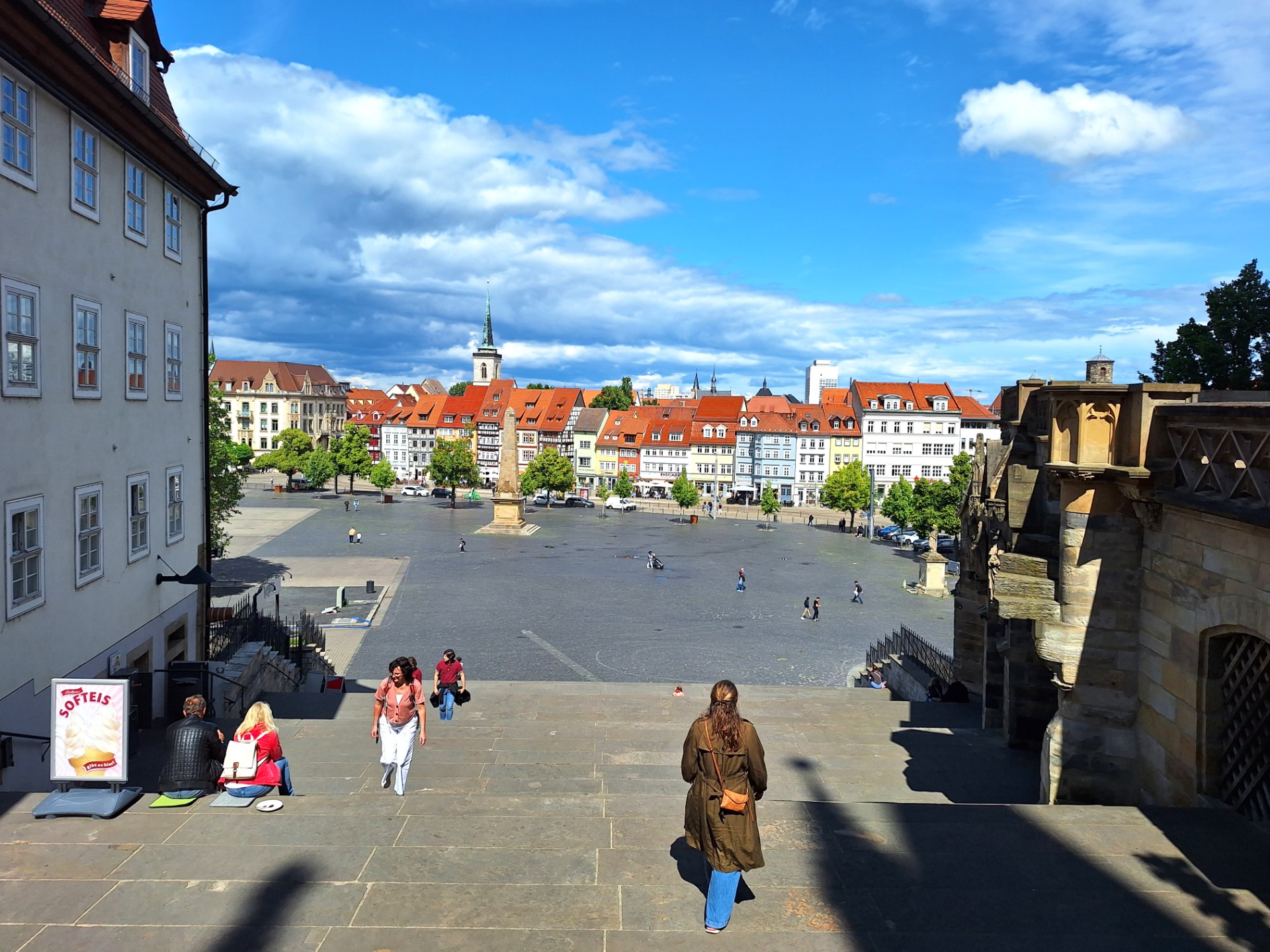
View from the Dom to the Domplatz and the city center with the Obelisk and the Allerheiligenkirche.
Glimpses of Erfurt.
The old
city center suffered relatively little damage during WW II compared to other bigger cities though it was hit by 27 air raids,
killing approximately 1,600 people and damaging 17% of its buildings. Erfurt was also the base of
operations for Topf und Söhne, the company that specialized in furnaces before
World War II. They also built crematorium ovens for concentration camps like
the Auschwitz-Birkenau and the nearby Buchenwald camp. When coming
from the stunning Wartburg that morning, Kim and I were not burdened with that
knowledge and just enjoyed the city by bike, the sun, and had some terrific currywurst
which we ate on a bench at the Rathausbrücke.

Fishmarket with "Der Römer ", a Roman warrior with the Erfurt coat of arms on his flag and shield made by Dutch sculptor Israel van Milla in 1591.
More glimpses of Erfurt.
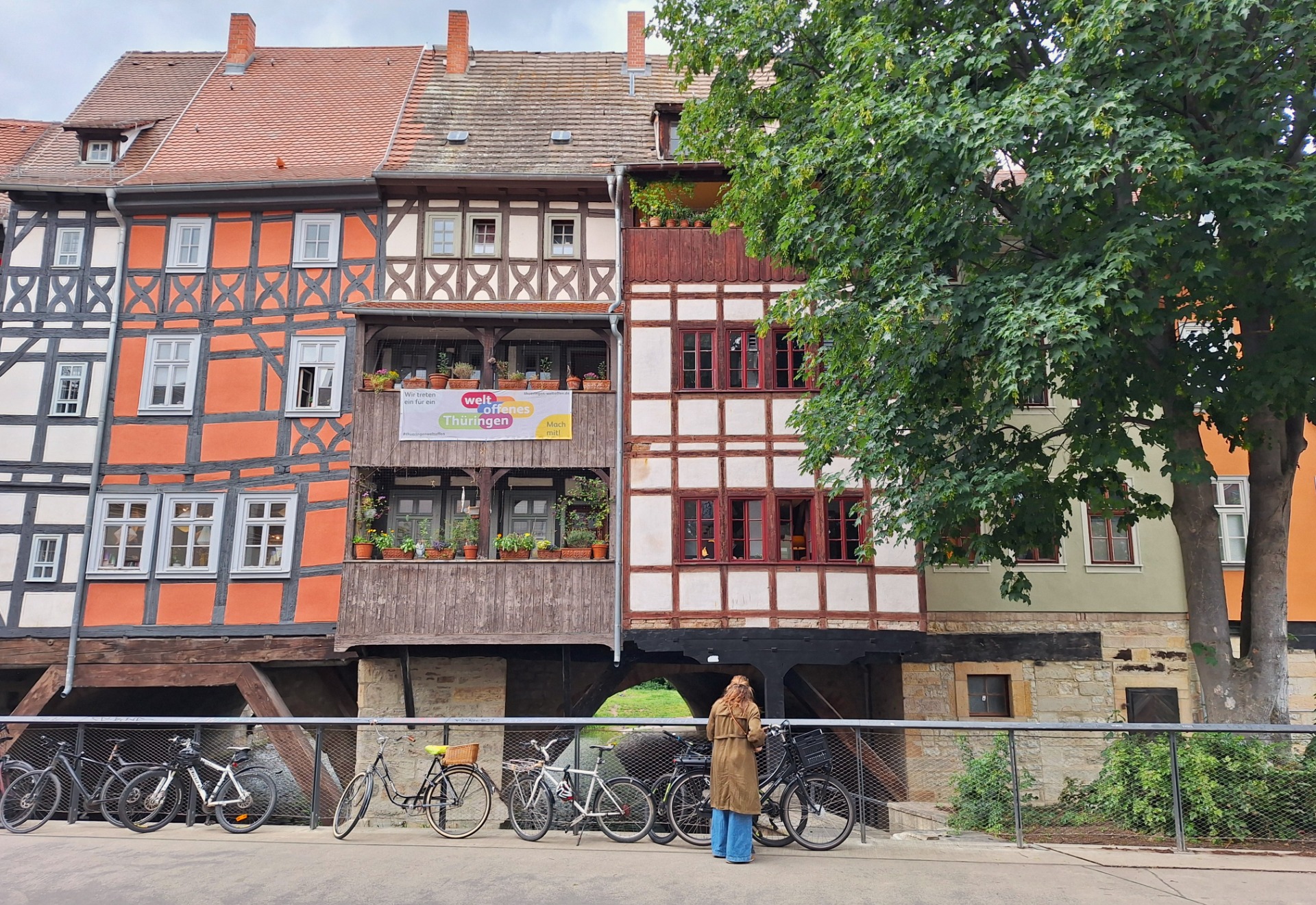
Parking the bike at the Rathausbrücke with the Krämerbrücke and its characteristic house next to it.
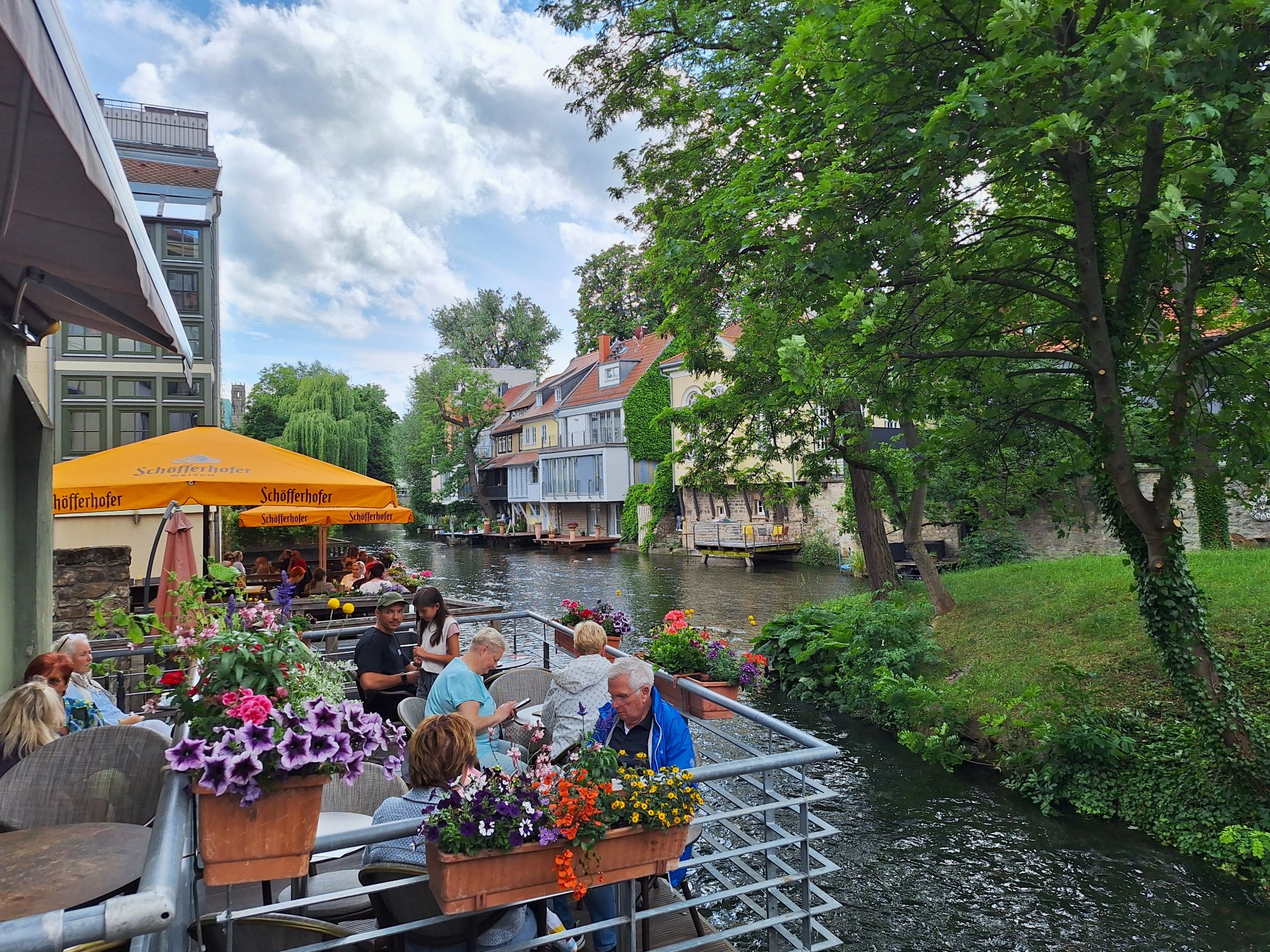
Terraces above the Gera river as seen from the Rathausbrücke.
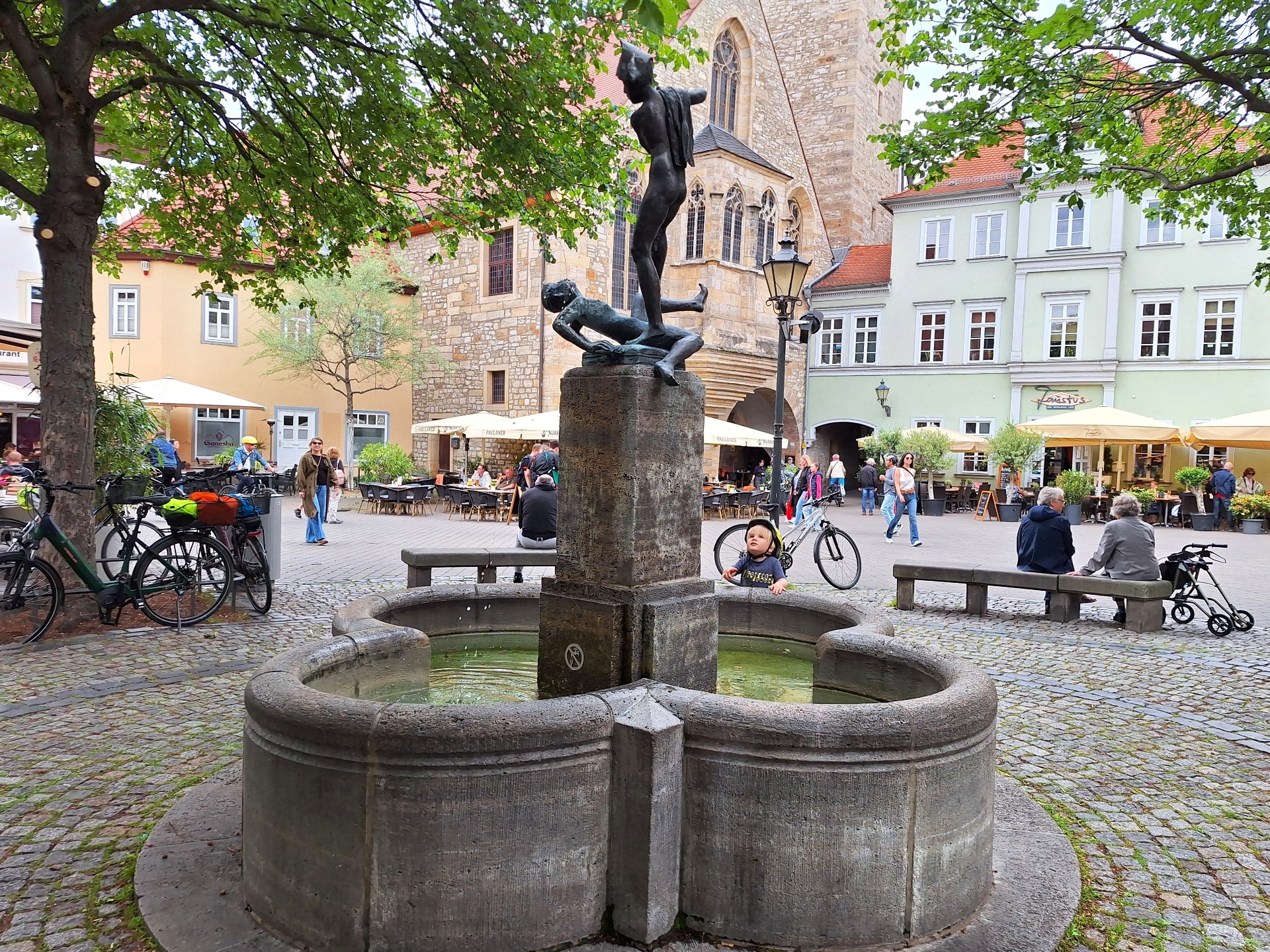
Bronze statue "Raufende Knaben" by Heinrich Apel (1990) at the Wenigemarkt with the Ägidienkirche.
Exploring Erfurt with the Krämerbrücke on the 2nd photo.
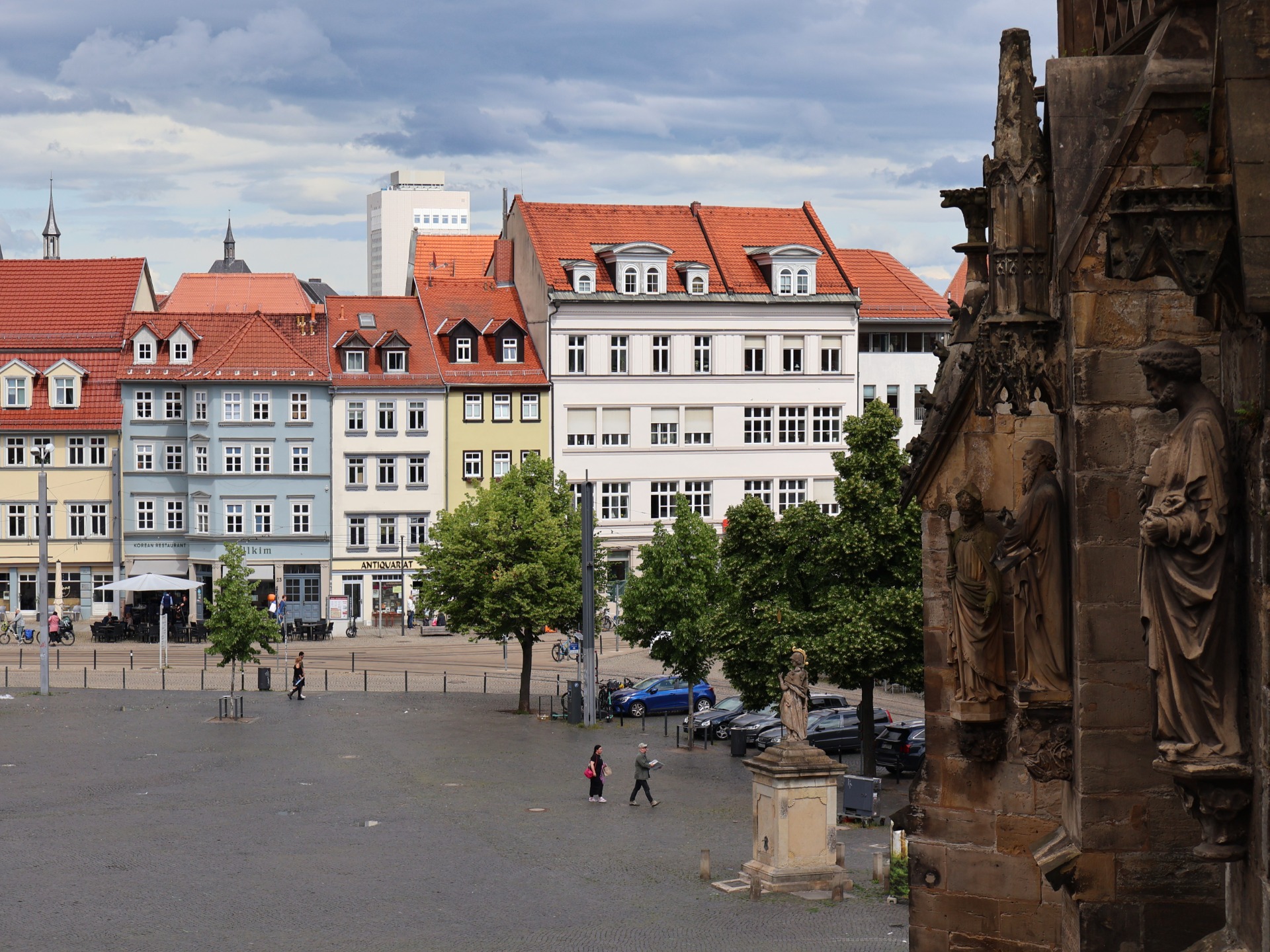
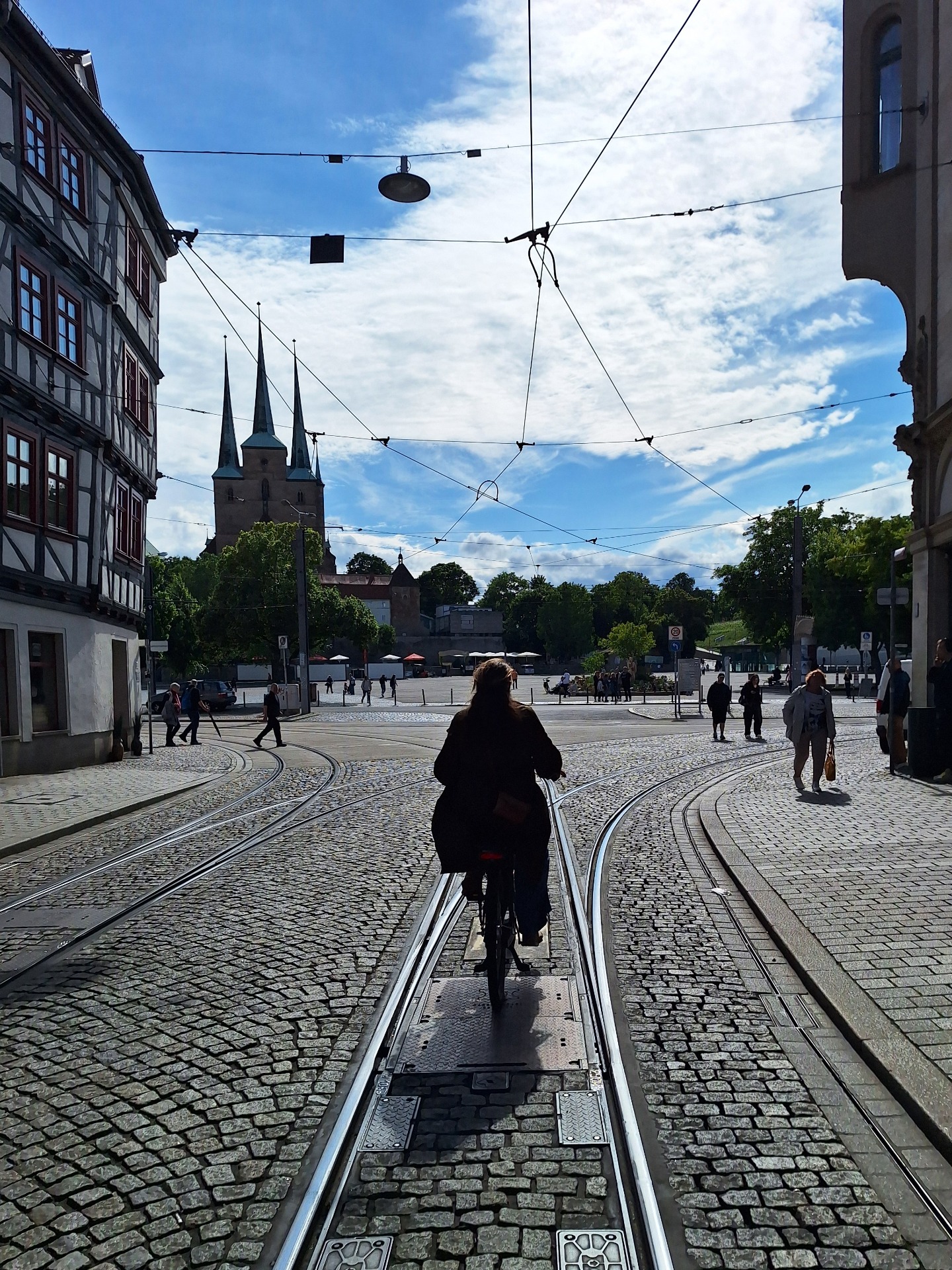
Below: View on the city center of Erfurt.

